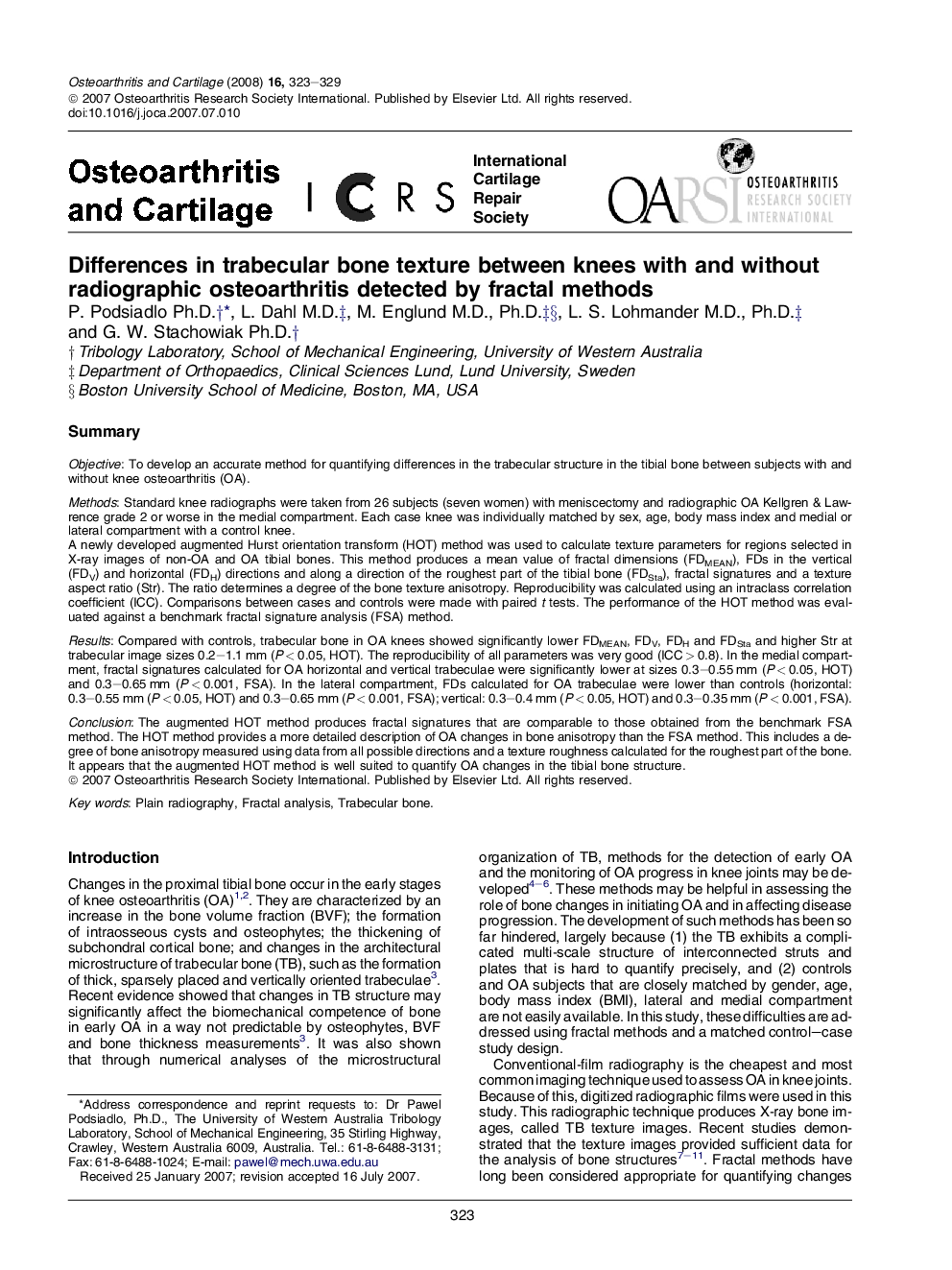| کد مقاله | کد نشریه | سال انتشار | مقاله انگلیسی | نسخه تمام متن |
|---|---|---|---|---|
| 3381148 | 1220237 | 2008 | 7 صفحه PDF | دانلود رایگان |

SummaryObjectiveTo develop an accurate method for quantifying differences in the trabecular structure in the tibial bone between subjects with and without knee osteoarthritis (OA).MethodsStandard knee radiographs were taken from 26 subjects (seven women) with meniscectomy and radiographic OA Kellgren & Lawrence grade 2 or worse in the medial compartment. Each case knee was individually matched by sex, age, body mass index and medial or lateral compartment with a control knee.A newly developed augmented Hurst orientation transform (HOT) method was used to calculate texture parameters for regions selected in X-ray images of non-OA and OA tibial bones. This method produces a mean value of fractal dimensions (FDMEAN), FDs in the vertical (FDV) and horizontal (FDH) directions and along a direction of the roughest part of the tibial bone (FDSta), fractal signatures and a texture aspect ratio (Str). The ratio determines a degree of the bone texture anisotropy. Reproducibility was calculated using an intraclass correlation coefficient (ICC). Comparisons between cases and controls were made with paired t tests. The performance of the HOT method was evaluated against a benchmark fractal signature analysis (FSA) method.ResultsCompared with controls, trabecular bone in OA knees showed significantly lower FDMEAN, FDV, FDH and FDSta and higher Str at trabecular image sizes 0.2–1.1 mm (P < 0.05, HOT). The reproducibility of all parameters was very good (ICC > 0.8). In the medial compartment, fractal signatures calculated for OA horizontal and vertical trabeculae were significantly lower at sizes 0.3–0.55 mm (P < 0.05, HOT) and 0.3–0.65 mm (P < 0.001, FSA). In the lateral compartment, FDs calculated for OA trabeculae were lower than controls (horizontal: 0.3–0.55 mm (P < 0.05, HOT) and 0.3–0.65 mm (P < 0.001, FSA); vertical: 0.3–0.4 mm (P < 0.05, HOT) and 0.3–0.35 mm (P < 0.001, FSA).ConclusionThe augmented HOT method produces fractal signatures that are comparable to those obtained from the benchmark FSA method. The HOT method provides a more detailed description of OA changes in bone anisotropy than the FSA method. This includes a degree of bone anisotropy measured using data from all possible directions and a texture roughness calculated for the roughest part of the bone. It appears that the augmented HOT method is well suited to quantify OA changes in the tibial bone structure.
Journal: Osteoarthritis and Cartilage - Volume 16, Issue 3, March 2008, Pages 323–329